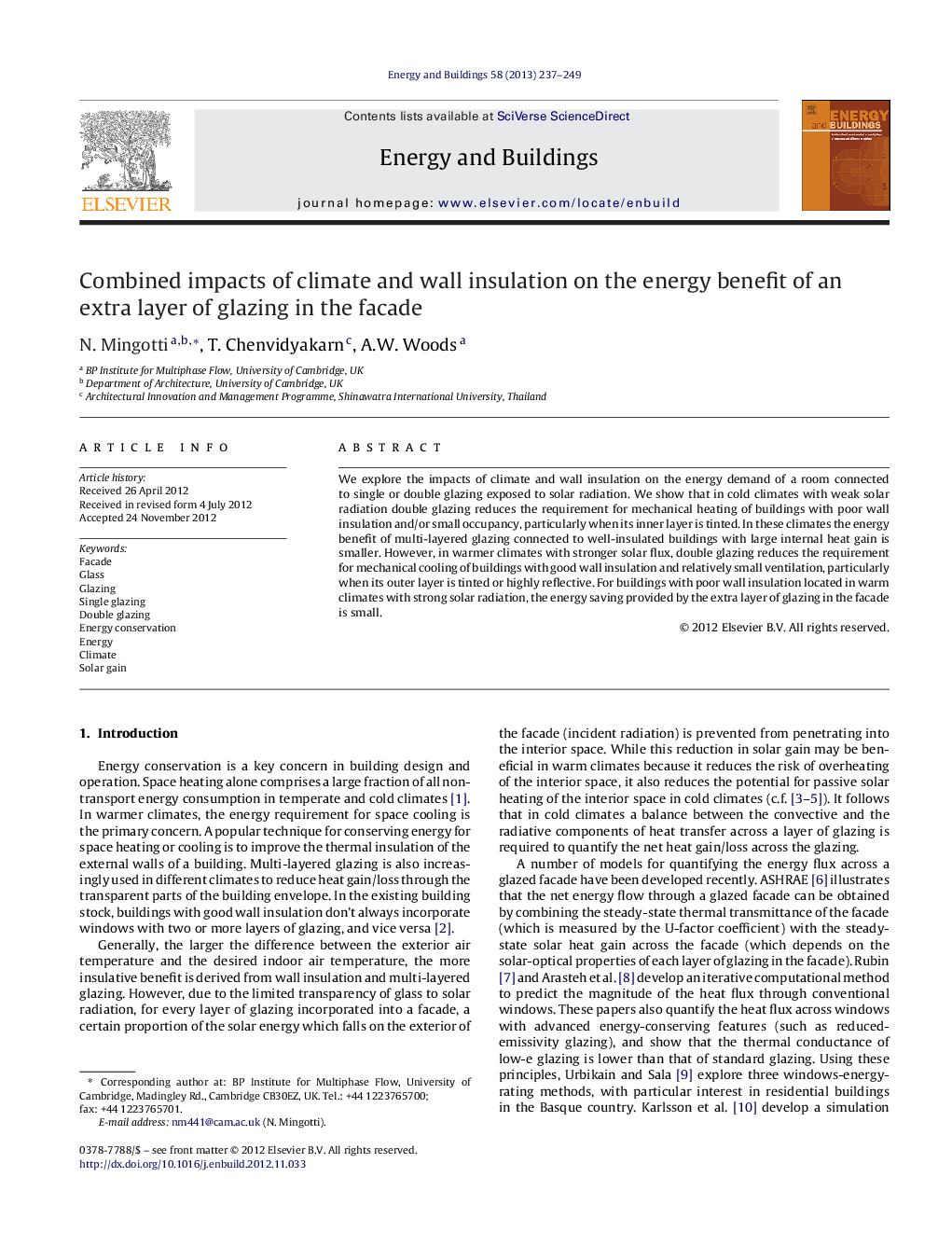| Article ID | Journal | Published Year | Pages | File Type |
|---|---|---|---|---|
| 263538 | Energy and Buildings | 2013 | 13 Pages |
We explore the impacts of climate and wall insulation on the energy demand of a room connected to single or double glazing exposed to solar radiation. We show that in cold climates with weak solar radiation double glazing reduces the requirement for mechanical heating of buildings with poor wall insulation and/or small occupancy, particularly when its inner layer is tinted. In these climates the energy benefit of multi-layered glazing connected to well-insulated buildings with large internal heat gain is smaller. However, in warmer climates with stronger solar flux, double glazing reduces the requirement for mechanical cooling of buildings with good wall insulation and relatively small ventilation, particularly when its outer layer is tinted or highly reflective. For buildings with poor wall insulation located in warm climates with strong solar radiation, the energy saving provided by the extra layer of glazing in the facade is small.
► Different net heat fluxes through single/double glazing in different climates. ► Counter-intuitive behaviour of low-e coating on double glazing in cold climates. ► In cold climates double glazing better for buildings with poor wall insulation. ► In warmer climates double glazing better for buildings with good wall insulation.
